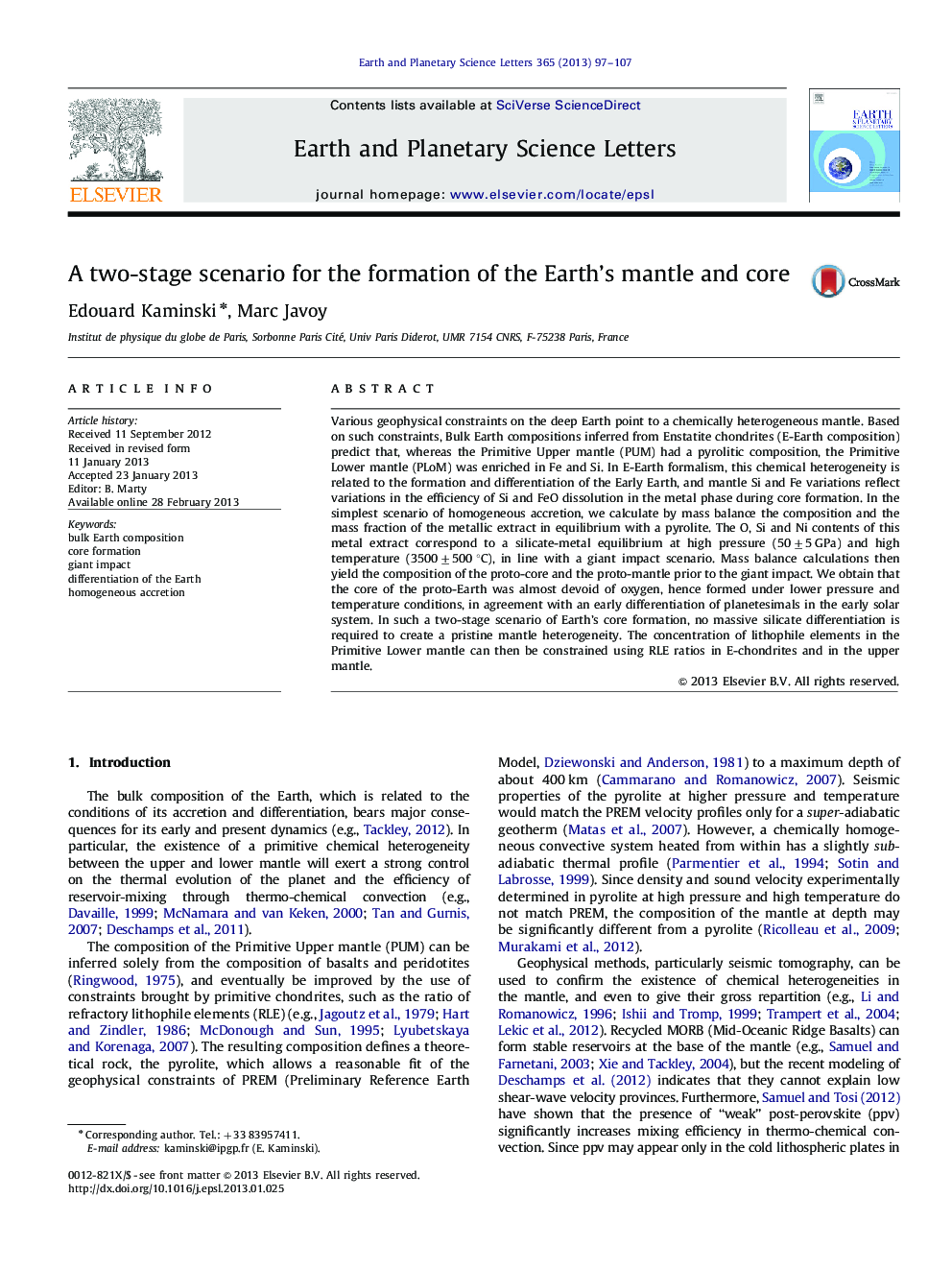| Article ID | Journal | Published Year | Pages | File Type |
|---|---|---|---|---|
| 4677132 | Earth and Planetary Science Letters | 2013 | 11 Pages |
Various geophysical constraints on the deep Earth point to a chemically heterogeneous mantle. Based on such constraints, Bulk Earth compositions inferred from Enstatite chondrites (E-Earth composition) predict that, whereas the Primitive Upper mantle (PUM) had a pyrolitic composition, the Primitive Lower mantle (PLoM) was enriched in Fe and Si. In E-Earth formalism, this chemical heterogeneity is related to the formation and differentiation of the Early Earth, and mantle Si and Fe variations reflect variations in the efficiency of Si and FeO dissolution in the metal phase during core formation. In the simplest scenario of homogeneous accretion, we calculate by mass balance the composition and the mass fraction of the metallic extract in equilibrium with a pyrolite. The O, Si and Ni contents of this metal extract correspond to a silicate-metal equilibrium at high pressure (50±5 GPa) and high temperature (3500±500 °C), in line with a giant impact scenario. Mass balance calculations then yield the composition of the proto-core and the proto-mantle prior to the giant impact. We obtain that the core of the proto-Earth was almost devoid of oxygen, hence formed under lower pressure and temperature conditions, in agreement with an early differentiation of planetesimals in the early solar system. In such a two-stage scenario of Earth's core formation, no massive silicate differentiation is required to create a pristine mantle heterogeneity. The concentration of lithophile elements in the Primitive Lower mantle can then be constrained using RLE ratios in E-chondrites and in the upper mantle.
► E-chondrites are used to model the composition of Earth's building blocks. ► HP/HT metal extraction during the giant impact produced a pyrolitic upper mantle. ► The proto-core composition implies a formation under “relatively” low P,T conditions.
